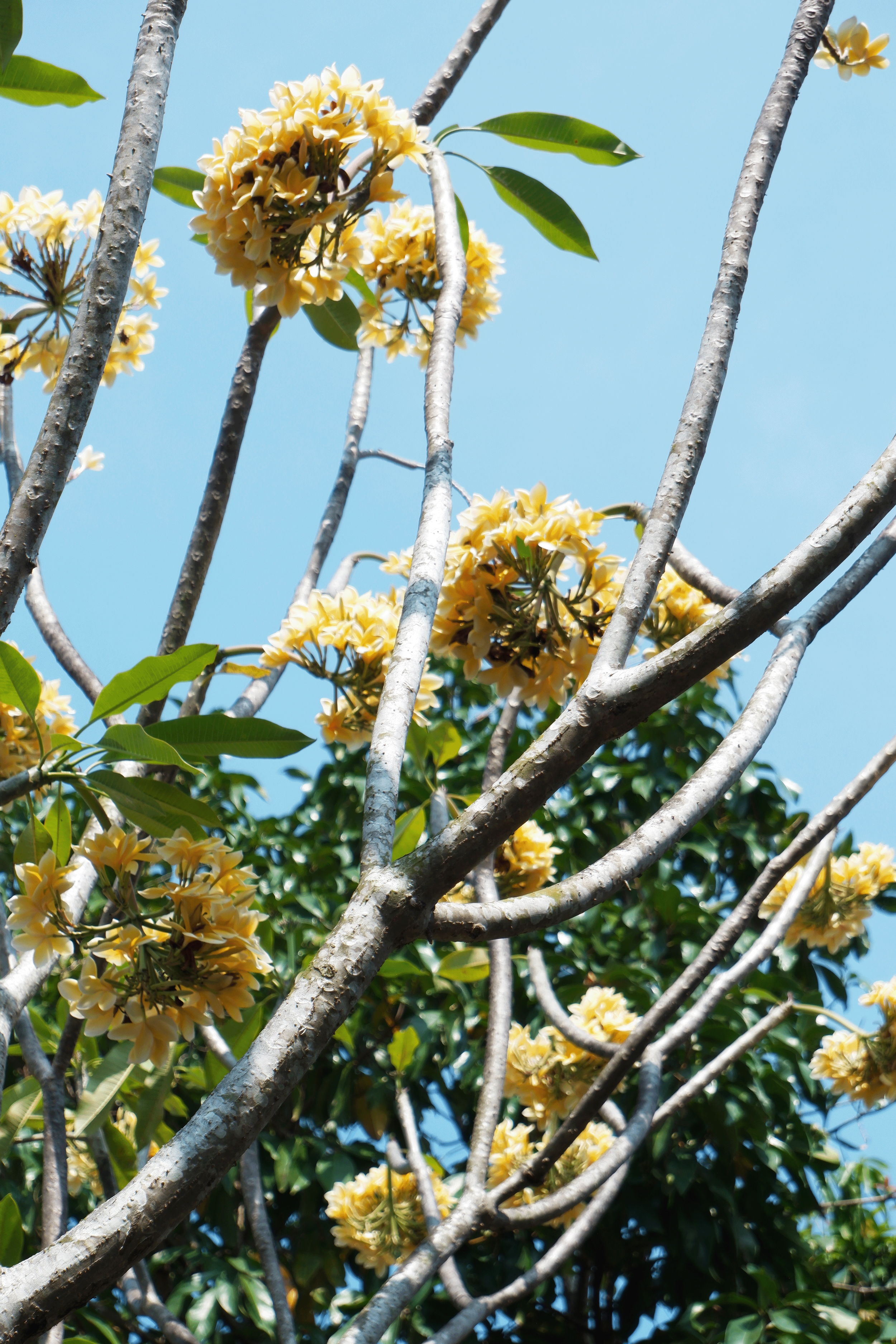Kamboja in the heart of Kotagede: in between beauty and serenity.
The Serene Witness: Unearthing the Deep Philosophy of Java's Kamboja Tree
In the heart of Java, particularly in the ancient, winding alleys of Kotagede, you will find a tree of striking contrast. Its waxy, elegant flowers that could be white, yellow, or pink. Release powerful, sweet fragrance, especially as dusk falls. This is the pohon kamboja, or frangipani. For many, its beauty is undeniable, yet in Java, it carries a deep and often misunderstood stigma as the "cemetery tree."
Our Instagram content points out that this tree is "synonymous with cemeteries in Java." But this association is not one of morbidity. Instead, it is a rich tapestry of philosophy, spirituality, and history. Behind the stigma, the kamboja tree symbolizes the immortal soul, devotion to ancestors, and the profound harmony between life and death.
Deconstructing the "Cemetery Tree"
The connection between the kamboja and graveyards is both practical and deeply spiritual. In Javanese culture, a cemetery (makam) is not just a place of sorrow but a place of respect, serenity, and connection to the ancestors.
A Scent for the Soul: The most prominent feature of the kamboja is its strong, fragrant aroma. Historically, this scent served a practical purpose by masking other odors. On a spiritual level, the fragrance is believed to create a serene and sacred atmosphere. Javanese belief, influenced by centuries of Hindu-Buddhist and Kejawen (Javanese mysticism) traditions, holds that fragrant scents are favored by good spirits and ancestral souls. Planting the kamboja is an act of welcoming, creating a peaceful space for visiting family and for the souls who rest there.
A Tree of Simplicity: Unlike large, leafy trees, the kamboja has a sparse canopy and does not shed an excessive amount of leaves. This was a practical choice for graveyards, ensuring the tombs and pathways remained clean and clear. Its simplicity reflects a Javanese ideal of humility, even in death.
A Symbol of the Immortal Soul and Devotion
The presentation's second slide correctly identifies the tree's core symbolism: "it symbolizes the immortal soul and devotion to ancestors." This philosophy is drawn directly from the tree's nature.
The kamboja is remarkably resilient. A branch snapped from its trunk and planted directly into the soil will, with very little care, take root and grow into a new tree. This incredible ability to regenerate is seen as a powerful metaphor for eternal life and the "immortal soul." It teaches that death is not an end, but a transition, and that life finds a way to continue.
This symbolism of eternity makes it the perfect offering of "devotion to ancestors." By planting a tree that signifies immortality, one is expressing a wish for the eternal peace of their forebears. The tree, which blooms continuously throughout the year, becomes a living, beautiful testament to unending respect and remembrance.
Kotagede: Where Past and Present Harmonize
The article idea specifically highlights Kotagede, the ancient capital of the Mataram Sultanate and a place where "you live along the past and the present." In Kotagede, this philosophy is not abstract, it is tangible.
In Kotagede, you can walk from a bustling silver workshop, ringing with the sounds of modern commerce, to the quiet, ancient courtyard of the Kotagede Royal Cemetery (Makam Raja-Raja Mataram). Guarding these 16th-century tombs are ancient kamboja trees, some centuries old.
These trees are the physical embodiment of the harmony mentioned in Slide 3. They are "immortal beauty amidst mortality."
The Past: They stand as silent witnesses to the kings and founders of the Mataram dynasty buried beneath the soil.
The Present: They continue to bloom, releasing their scent for the living, the pilgrims, the tourists, and the local residents who pass by daily.
The kamboja in Kotagede is a teacher. It demonstrates that the past is not dead; it coexists with and informs the present. The tree's serene beauty in the "calmest place ever", a royal graveyard is a constant reminder that life and history are intertwined, and that beauty can be found in the acceptance of this complete cycle.
The frangipani is, therefore, far more than a cemetery tree. It is a symbol of resilience, a fragrant bridge to the spiritual world, and a living monument to the Javanese philosophy of harmony between life, death, and eternity.


